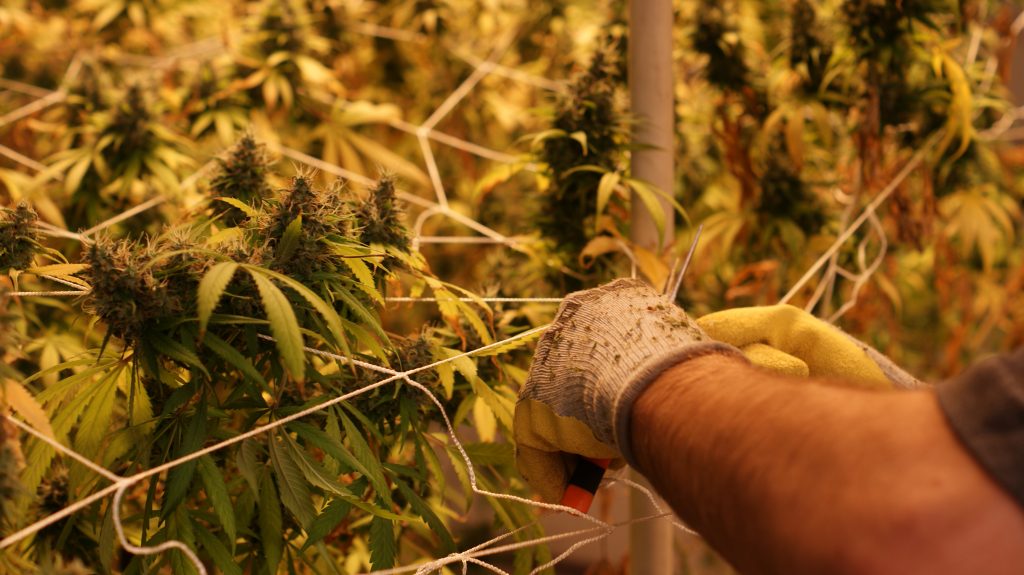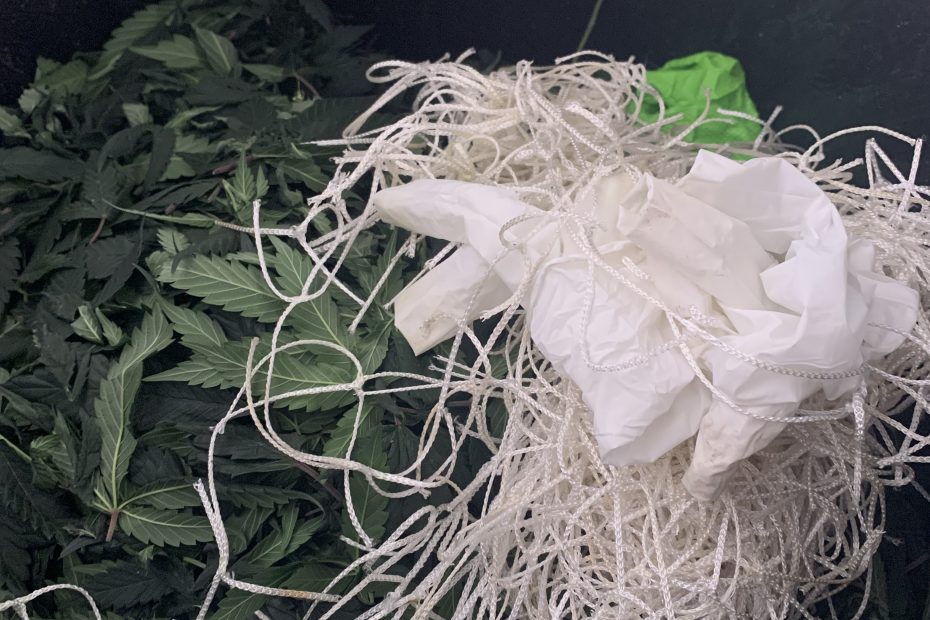PART 2:
Transforming Cannabis Cultivation: Sustainable and Cost-Effective Alternatives to Plastic Netting
The labor costs associated with trellising flower canopies in the cannabis industry play a significant role in the financial landscape of businesses. Let’s delve into some real-world examples and statistics to understand the impact on cultivators’ budgets.
According to industry reports, labor costs account for a substantial portion of the expenses incurred in the installation, maintenance, and removal of plastic netting used for trellising flower canopies. These costs vary based on factors such as location, labor market, and the size of the cultivation operation, however, the extent of use globally is literally millions of square feet each year.
For instance, in a large-scale cannabis cultivation facility in California, the labor expenses associated with trellising were estimated to be around $5,000 per month. This figure included the wages of skilled laborers responsible for the installation and maintenance of plastic netting, as well as the eventual removal and disposal of the nets. This cost multiplies room by room and rack by rack, especially when considering multi-tiered operations; and when working at elevated heights productivity decreases further. Over the course of a year, this amounts to roughly $60,000, which significantly impacts the cultivator’s budget.

Similarly, a medium-sized cannabis cultivation operation in Colorado reported labor costs of approximately $3,500 per month for trellising flower canopies. This amounted to $42,000 per year. These costs encompassed the wages of laborers, training, and the time and effort required to ensure proper installation and maintenance of the plastic netting. These numbers exclude the cost of goods.
In addition to labor costs, there are other significant factors associated with body mechanics, injuries, morale, and job satisfaction. When surveyed, workers responsible for assembling and dismantling standard trellising netting consistently express their dislike for this particular task. Dealing with tangled netting not only wastes time but also hampers productivity in areas that could be more effectively utilized.
The Environmental Impact of Plastic Netting and Wastefulness
The use of nylon or plastic netting in cannabis cultivation not only has financial implications but also poses significant environmental challenges. Let’s explore how wasteful this practice is and the detrimental effects it can have on the environment.
Plastic netting, typically made from non-biodegradable materials, contributes to the growing plastic waste problem. These nets have no secondary use, it’s a 100% waste product at the end of its life cycle. If not properly disposed of or recycled, they end up in landfills where it takes hundreds of years to decompose. The accumulation of plastic waste harms the environment, contributes to pollution, and poses risks to wildlife and ecosystems.
Moreover, the production of nylon or plastic netting requires the extraction and consumption of non-renewable resources, contributing to carbon emissions and exacerbating the environmental footprint of cannabis cultivation.
By transitioning to sustainable alternatives like Green Tree Scrog’s retractable trellising system, cannabis cultivators can minimize their environmental impact and reduce wastefulness, by taking advantage of a more eco-friendly approach to trellising flower canopies. Not only does this reduce the generation of plastic waste, but it also eliminates the need for frequent replacements, further reducing the strain on the environment.
Real-World Side-by-Side Comparison of Green Tree Scrog VS Traditional Trellising
When we take into account these practical instances, they emphasize the economic pressure that labor expenses related to plastic netting can impose on cannabis businesses’ operating expenditures. We must also not disregard the capital expenditure (CAPX) involved, as there is a significant cost associated with repeatedly buying trellis netting. As cultivators strive to enhance their processes and increase profitability, it becomes crucial to explore alternative approaches that are both sustainable and cost-effective.
An innovative new technology created by Green Tree Scrog™ presents a groundbreaking remedy for managing cannabis canopies. Their system eliminates the inefficiency and untidiness linked to conventional trellising techniques, guaranteeing a streamlined and effective cultivation process. Its lightweight yet sturdy construction provides enduring support and convenient application. By reducing operational expenses and enhancing yields, it proves to be a prudent investment for your cannabis enterprise. Furthermore, their system enhances staff productivity, prioritizes environmental sustainability, and can be tailored to suit operations of any scale.
According to CEO Bobby Mitchell, “Our retractable system offers significant advantages compared to traditional trellising netting. It can reduce harvest times by up to 60%, minimize trichome damage during harvesting by reducing plant-touching, and eliminates waste entirely after harvesting.
Embracing Sustainability for a Profitable Future
In conclusion, the costs associated with labor in the cannabis industry related to trellising flower canopies can be substantial and significantly impact a cultivator’s budget. Real-world examples illustrate the financial burden that plastic netting can place on businesses. Furthermore, the wastefulness of plastic netting and its detrimental effects on the environment make it crucial for cultivators to explore sustainable and cost-effective alternatives.
Transitioning to innovative methods like the Green Tree Scrogs system not only reduces labor costs but also addresses environmental concerns. By adopting a reusable long-term solution to trellising cannabis, cultivators can minimize plastic, increase productivity, and keep more money in their pockets.
Part 1: Cannabis Crop Management
References:
- GTScrog – Sustainable Cannabis Management Solutions. Retrieved from https://gtscrog.com
